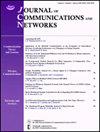使用 PUF 为物联网设备提供基于区块链的私有和联盟认证协议
IF 3.2
3区 计算机科学
Q2 COMPUTER SCIENCE, INFORMATION SYSTEMS
引用次数: 0
摘要
在这项工作中,提出了一种基于静态随机存取存储器-物理不可克隆函数(SRAM-PUF)的设备安全框架,该框架利用时下流行的区块链技术确保设备凭证的安全。提议的框架根据每个设备的硬件特征为其生成一个称为 PUF 密钥的独特指纹,该密钥将作为设备在认证和再认证阶段的认证参数。与当前使用安全数据库或仅使用公共区块链的趋势不同,拟议的工作同时使用联盟区块链和私有区块链来存储设备凭证和验证。联盟区块链用于首次身份验证,而私有区块链用于重复身份验证,从而节省了在重复身份验证过程中访问联盟区块链所需的时间。拟议的协议还包括相关实体之间的相互认证,从而为拟议的协议提供了双重安全性(设备认证和相互认证),使系统更安全、更稳健地抵御攻击。我们使用 Scyther 工具对拟议协议进行了安全分析,并使用威胁分析和真实或随机模型(ROR)从理论上证明了该协议在各种攻击下的稳定性。协议的性能分析是通过分析拟议协议与其他最先进协议的计算和通信成本来完成的。此外,还在包括树莓派(Raspberry PI)和阿杜诺(Arduino)组件的区块链测试平台上对所提出的协议进行了评估。结果表明,引入私有区块链减少了设备重新认证所需的时间。本文章由计算机程序翻译,如有差异,请以英文原文为准。
Private and consortium blockchain-based authentication protocol for IoT devices using PUF
In this work, a static random access memory-physical unclonable function (SRAM-PUF) based device security framework is proposed which uses the trending blockchain technology for securing the device credentials. The proposed framework produces a unique fingerprint called PUF key for each device based on its hardware characteristics which will act as an authenticating parameter for the devices during the authentication and re-authentication phase. The proposed work uses both consortium and private blockchains for storing device credentials and authentication, unlike the current trend of using either a secured database or only a public blockchain. The consortium blockchain is used for first-time authentication, while the private blockchain is used for repeated authentication which saves the time incurred in accessing the consortium blockchain during repeated authentication. The proposed protocol also includes mutual authentication between the entities involved and thus provides dual security (device authentication and mutual authentication) to the proposed protocol making the system more secure and robust against attacks. Security analysis of the proposed protocol is done using the Scyther tool and the protocol is also theoretically proven to be stable under various attacks using threat analysis and the real-or-random model (ROR). The performance analysis of the protocol is done by analyzing the computation and communication cost of the proposed protocol against other state-of-the-art protocols. Further, the proposed protocol is also evaluated in the blockchain testbed which includes Raspberry PI and Arduino components. The results conveyed that the introduction of a private blockchain reduces the time incurred in the device re-authentication.
求助全文
通过发布文献求助,成功后即可免费获取论文全文。
去求助
来源期刊
CiteScore
6.60
自引率
5.60%
发文量
66
审稿时长
14.4 months
期刊介绍:
The JOURNAL OF COMMUNICATIONS AND NETWORKS is published six times per year, and is committed to publishing high-quality papers that advance the state-of-the-art and practical applications of communications and information networks. Theoretical research contributions presenting new techniques, concepts, or analyses, applied contributions reporting on experiences and experiments, and tutorial expositions of permanent reference value are welcome. The subjects covered by this journal include all topics in communication theory and techniques, communication systems, and information networks. COMMUNICATION THEORY AND SYSTEMS WIRELESS COMMUNICATIONS NETWORKS AND SERVICES.

 求助内容:
求助内容: 应助结果提醒方式:
应助结果提醒方式:


